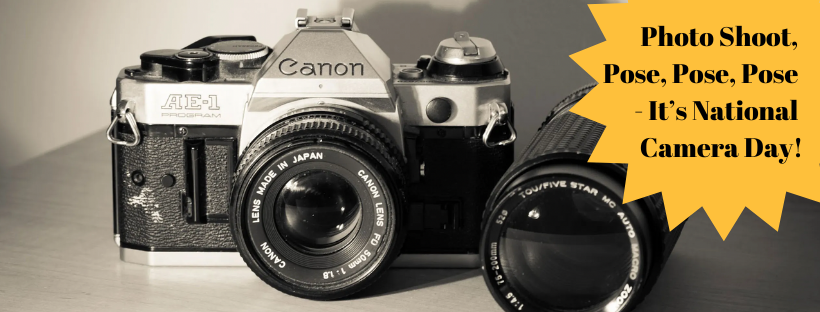It’s that time of the year again, it’s National Camera Day (June 29th)! Instead of going deep into the history of camera day, let’s go into how you can celebrate it to its full advantage in your own backyard.
Let’s start out with the obvious, we all have a camera in some shape or form. Whether it be a fancy DSLR or the magical rectangle in your pocket. So how can we use it to our advantage, especially on a day dedicated to it? Simple, find your muse, most of the time our muse is right in front of us and for some it can be in your own backyard, like your water feature!

We know social media is extremely prevalent in our society, from life hacks on TikTok to promotions from influencers on Instagram. If you’re a business owner and want to gain more traction on social media, nothing grabs the attention of people more than a well taken photo of a product, in this case a water feature. There are things to consider when setting up what you want to shoot, such as lighting or time of day and general composition. Your camera can help capture all of that, so let’s go into more detail about what to consider.
Set the Tone with Lighting
Let’s start off by going into what the ideal time of day for a photoshoot of your water feature. That ideal time is known as Golden Hour or Magic Hour, it’s the time of day either right before sunrise or right after sunset when the light is softer and redder than when the sun is at its highest point in the sky. This lighting can tap into what kind of emotions you want to portray in your water feature, like tranquility, calmness, and overall aesthetic. If you want to highlight lighting in or around the pond, sunset is the perfect time to do so, especially as it gets darker, you’ll be able to make the lighting pop in the photo. Most phones have night mode so even if you don’t have a fancy DSLR camera you can still get amazing night shots.
For iPhone, open the up the camera app, for most low-light situations, Night Mode will automatically turn on. There’s a yellow icon at the top of the screen that will indicate when Night Mode is turned on, a number will appear next to it to indicate how many seconds the camera will take to shoot. You can experiment with this mode by tapping on the yellow icon and adjusting the timer. Tap on the Shutter button and then hold the camera as still as you can while it takes the shot. You can then go into your Adjustments settings and play around with the exposure, brilliance, contrast and more. For an Android, you have more of an advantage since most Androids have a manual camera setting, much like a DSLR. In the camera app, you can select manual and adjust the ISO and shutter speed.
Photo Composition is Key
Composition can either make or break your image, so if you want to crack into the algorithm and have your water feature center stage, take into consideration what you want to be the focal point of the image. This is the “rule of thirds”, break your frame into imaginary thirds on both the horizontal axes and vertical axes. Where the lines intersect are your points of interest, the key is to keep the composition clean. The rule of thirds is very helpful when capturing streams, waterfalls and surround areas around the feature. When capturing streams look for the “S” curve, that will help guide your image and keep the line of water as the focal point. Remember, your phone can help out too with a simple setting called “Live” when shooting a waterfall, you can tap on Live at the top of the screen, use the pull-down menu to find Exposure and wait for the image to convert from Live to Exposure and watch as the hard raw water becomes softer and gives a silky-smooth aesthetic.
If you are using a DSLR, have your F-stop at F/22 (sometimes F/11 or F/16 work well too), Exposure at 2 seconds and ISO set at 200. When taking a photo of a smaller feature, try highlighting it’s features instead of its general surrounds.
The rule of thirds may not always apply to these small feature situations and that’s okay! Is it a nozzle? If so, use an angle to give it height and grandeur, really show off the height of the spray. Angles help the composition and bring more dynamic into the shots. Something as simple as a Filtral UVC in a container can become something vibrant by shooting at a slight angle towards the nozzle, whether it’s Lava, Vulcan or Magma, zooming in slightly where you still see a little bit of the lip of the container and centering the attention on the spray. Remember to play around with the ISO and F-stop to get silky-smooth water flow!
On that note, happy National Camera Day! You’ll be amazed at what you can do, and the response receive. Get out there and get creative!
Read Leah’s blog on National Camera Day from last year! Ready? Set. Smile! It’s Camera Day!
About the Author:
Leah La Farciola


